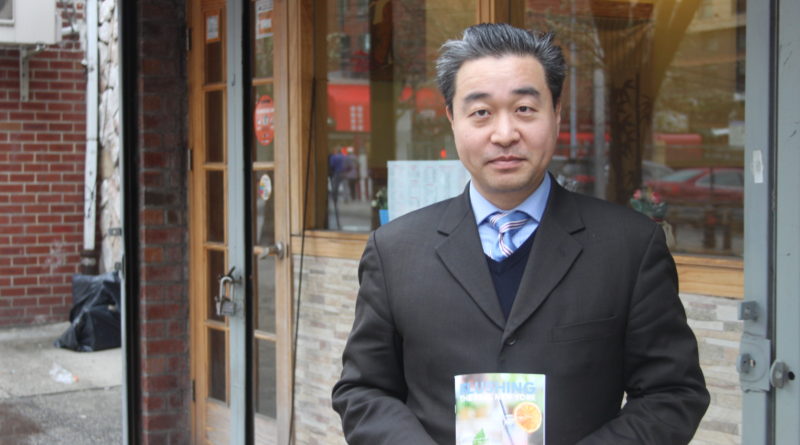LOCAL RETAIL FACING MULTI-PRONGED CHALLENGES
There have also been concerns with parking. When a former municipal parking lot was sold to develop Flushing Commons, a massive mixed-use development, small businesses feared that loss would affect their bottom line.
Choe said the private developer in that case built back the parking, but set the terms, rates and discounts.
“[Small businesses] are going to be outgunned by the national retailers who have much larger marketing budgets and branding, but also this advantage with parking,” he said.
Another challenge retailers face is adapting to the digital age, particularly in an area like Flushing that is still largely a cash economy.
Choe said there has been some resistance to connect to the online ecosystem because “there’s an older way of doing business” in Flushing. Those methods include word of mouth and more narrow channels based on language and culture.
Because small business owners are so concerned about their bottom line, Choe said they usually make an immediate calculation about whether it’s worth it to spend time and effort on becoming more digitally focused.
“There are so many things to do during the day just to survive,” he said. “If you think about the amount of time you spend maintaining your Facebook page, launching a website, sending out tweets and Instagram posts, that’s a lot of time, especially for older folks who may not be familiar with the technology.
The challenges are not confined to just Flushing. Ted Renz, executive director of the Myrtle Avenue Business Improvement District (BID) in Ridgewood, said retail is changing on many commercial strips nationwide.
Myrtle Avenue has always been home to national retailers like Children’s Place or Oshkosh B’gosh. Renz said he sees these chain stores as a “pull” for customers to check out the rest of the mom-and-pop stores on the strip.
One change that will affect Ridgewood is the building of new residential towers nearby, which will bring hundreds of new families into the neighborhood. Renz said he hopes to tap into that population.
“The western end, traditionally weaker in the last 15 to 20 years, will rebound and you’ll see a different caliber because of the housing being built,” he said. “As those buildings become filled, it will help the retail climate.”
The BID is also facing a problem with empty storefronts on the strip. Renz said when he talks to brokers, they tell him it’s because landlords are asking for astronomical rents.
“They want their prices off the charts and way unreasonable for what the market can make,” he said.
To address some of these challenges, groups like the Greater Flushing Chamber of Commerce are taking steps to help local retailers. Through a grant from the Department of Small Business Services, Choe has spearheaded a campaign called Flushing Fantastic to rebrand the neighborhood.
The campaign allows business leaders to envision what Flushing should look like as a retail and tourist destination, Choe said. They are targeting demographic groups such as millennials and young families to bring them to the area.
“We want to try and create a more holistic and complicated picture that really delves deeply into the rich history and culture that we have to offer,” he said.
In addition to creating a website and using social media marketing, the Flushing Fantastic campaign is offering assistance to small businesses. Experts host regular workshops to talk about marketing challenges, invite them to local events and will even organize a community expo.
The goal is that in the long run, the mom-and-pop stores will adapt and change to the competitive marketplace. They will transition to becoming both a local and online business.
If they don’t, Choe warned that the unique businesses that once made up Flushing will be priced out and displaced, sending the neighborhood into a “downward spiral.”
“People come to Flushing for a reason,” he said, “and if you take that reason away, you’re just another anonymous town or village in the United States.”
Should they fight back and compete against the growing forces of national retailers and online competitors, they will be able to grow the economy, employ more local residents, and generate more tax revenue for the local government.
Most importantly, Choe said, they will continue to play a social role of allowing new immigrants to come, make a living and become middle-class Americans.
“That’s something that has been a traditional role that Flushing has played,” Choe said. “We’re hoping, and we’re doing our best at the chamber, to make sure that role continues into the future.”

